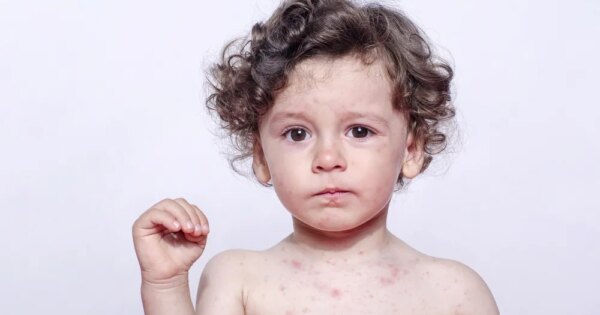Your child has a scratchy throat, stuffy nose, and seems more irritable than usual. Could it be the cold or the flu? During the winter months both viruses are going around, so there’s a high probability it could be either one. But which is it?
The common cold and influenza are often mistaken for one another because they can present similar symptoms and both are respiratory illnesses. While they can be similar, they are caused by two completely different viruses. In order to get the proper treatment it’s important to be able to distinguish between the two. To help, we’ve created a list detailing how these two illness differ from each other.
12. How Did it Start?
One of the best ways to tell the difference between a cold and the flu is by gauging how the illness started. Did your child develop symptoms gradually over a period of time or did it seemingly occur out of nowhere?
If the illness came on gradually, it’s likely a cold. The flu on the other hand happens very quickly. “Colds, even really yucky ones, start out gradually,” says Julie Kardos, MD, and Naline Lai, MD of Two Peds in a Pod to Good Housekeeping. “The flu, on the other hand, comes on suddenly and makes you feel as if you’ve been hit by a truck. The fever usually lasts 5 to 7 days. All symptoms come on at once; there is nothing gradual about coming down with the flu.”
11. Fever
Most of the time a cold won’t cause a fever, but with children it sometimes can. If it does, it will be a low-grade fever, whereas the flu will result in a persistent, high fever that does not subside. According to WebMD, a fever from the flu can get up to 104-degrees fahrenheit. The source also notes that you should call the doctor immediately if your child is under 3 months and has a fever that reaches 100.4-degrees.
A fever from the flu can also bring on other symptoms such as shaking or the chills. If it’s the flu, their fever will last anywhere from three to four days. Children with the flu are also more prone to vomiting and diarrhea which isn’t usually the case with a common cold.
10. Headache
A headache can sometimes accompany a cold, but similar to many of the other symptoms on this list, it will be mild. A headache with the flu almost always occur and will be much more severe.
9. Stuffy Nose
When it comes to having a stuffy nose, this can occur with both the flu and a cold. Being congested and stuffed up is one of the most common symptoms of a cold, and with the flu it can happen, but not always.
According to WebMD, during a cold “the nose teems with watery nasal secretions for the first few days. Later, these become thicker and darker.” Dark mucus is what you want to see because that is the most natural and means your child hasn’t picked up a bacterial infection, such as a sinus infection.
8. Sneezing
Similar to a stuffy nose, sneezing often occurs with a cold, but when it comes to the flu it’s doesn’t occur 100-percent of the time. It can happen, but there are many cases when sneezing doesn’t occur with the flu. It’s more commonly associated with a cold and will likely occur in tandem with a stuffy, runny nose.
7. Cough
A cough does occur in both a cold and the flu. If your child is struggling with a cold, they’ll likely have a mild hacking cough. They might also have a bit of chest discomfort. If they do, it will be mild and may last a while.
If it’s the flu, their cough will be dry and severe. This will also be accompanied by chest discomfort.
6. Body Aches
A cold can cause some very mild body aches and pains and with the flu these aches and pains are a given. Not only that, but they are also sometimes severe. A good way to compare the two is by where their symptoms occur. If your child is suffering from the flu, their symptoms will occur in other areas of their body, not just their head, says WebMD. They’ll likely feel it throughout their whole body in the form of body aches and chills.
Parenting Healthy Babies notes that body aches are often overlooked by parents in their children because they often mistake them from physical exertion. Let’s face it, kids are often tired after a long day of playing and they can get all kinds of bumps and bruises. Use your best instincts, if it’s flu season and they haven’t been playing outdoors or been active all day, their complains of body pain may be due to an oncoming illness. If it’s the flu, these aches most commonly occur in the back, legs and will often be accompanied by the chills.
5. Tiredness
If your child has a cold, they might still feel well enough to play or even attend school, but with the flu they won’t. You will be able to gauge how sick your child is by how they are functioning. If it’s the flu, daily activities will become a struggle for them because the flu causes extreme fatigue. A cold can cause mild tiredness as their body tries to fight off the virus, but the flu will result in a bedridden child. Their fatigue will be extreme and can last for weeks.
In addition to being tired, a child with the flu will likely be quite irritable, particularly if they are quite young. “Many parents will say that they knew their child wasn’t feeling well because he or she was fussier or sleepier than usual, or weren’t as hungry as usual,” says Christina Johns, MD, senior medical advisor at Children’s National Health System to Reader’s Digest.
4. Sore Throat
A sore throat is a common symptom of a cold. In fact, it’s usually the first sign that a cold is coming on. This sore throat will often last for a day or two before turning into more nasal symptoms like a runny nose, congestion, and a mild cough. When it comes to the flu, a sore throat isn’t one of the main symptoms, but it can happen. According to Tylenol, young children with the flu may seem generally sick, fussy, sleepy, and less hungry than usual. Older children will be “very tired and uncomfortable. They may complain that their throat hurts, and may refuse food and liquids because their throat may hurt more.”
Since the cold and flu can both cause a sore throat, the best way to differentiate between the two is by gauging the severity of the symptom. With a cold, a child may complain about a sore throat and a stuffy nose and simply eat less than usual, whereas with the flu they may refuse to eat all together.
3. How Long Does it Last?
Yet another differentiator between the cold and the flu is how long the illness lasts. “The average length of a cold is 7 to 10 days, although sometimes it takes two weeks or more for all the nasal congestion to resolve,” says Dr. Kardos and Dr. Lai to Good Housekeeping.
For the flu, it varies from person to person, particularly when it comes to age and whether or not they have any other medical conditions or illnesses. In adults, the recovery time can be anywhere from 5 to 7 days, with children the symptoms are usually gone in a week or two.
2. How to Treat a Cold
Unlike the flu, there is no vaccine to protect against the common cold so children are bound to catch a cold once in a while. Actually for children, it happens more than once in a while. According to Kids Health, adults catch a cold from time to time, but kids can get up to eight colds per year.
Colds aren’t usually anything too serious to worry about and most of the time they will clear up on their own without any kind of treatment. While medicine can’t cure a cold, it can help ease the symptoms. The source recommends giving children acetaminophen or ibuprofen to relieve any of their symptoms. Always follow any guidelines or recommendations listed on the package pertaining to age and weight. Never give children or teenagers aspirin as it can boost their risk of Reye’s syndrome, a rare disorder that causes harm to the liver or even brain damage, says WebMD.
1. How to Treat the Flu
While it’s probably a little unsettling to see your child sick with the flu, in most cases the flu is treatable and can be cured at home. The exception is with babies. If you think your child or baby has the flu, go see a doctor right away.
If diagnosed with the flu, parents should make sure their child drinks lots of fluids to avoid dehydration. This is particularly important for kids who are vomiting or experiencing diarrhea. They should get lots of sleep and rest. You can give them acetaminophen or ibuprofen to treat any fever or aches, says Kids Health. However, do not give children aspirin.
If your child has the flu, keep them at home. Do not send them to school or daycare until they feel better. They should only go back if they’ve been fever-free for at least 24-hours — that’s also without any medicine to reduce the fever.
Take extra precaution with kids under the age of 5, especially babies. As well as kids or teens who have weakened immune systems either from medicine or illnesses, any kids or teens with chronic medical conditions like asthma or diabetes, or those who take aspirin regularly.















